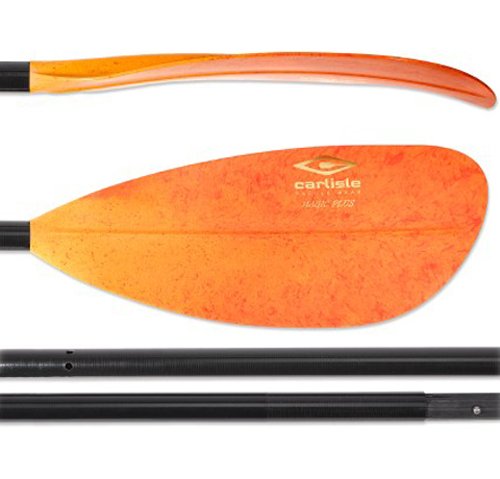DIFFERENT TYPES OF KAYAK PADDLES
 |
At first glance, the choices for kayak paddles can seem confusing. Keep in mind that much of the decision-making, however, really just comes down to personal preference. Furthermore, aspects such as feathering--which we'll get into shortly--begin to make a lot more sense when you're actually testing out a paddle in the water.
Your height and the length of your arms certainly influence the sizing of your paddle--stubbier shafts, unsurprisingly, usually being best for shorter folks--but there are other considerations as well. Paddles should be fitted to the beam of the kayak: A too-short paddle is useless with a broad boat. Low- vs. high-angle paddling, which reflects both a kayaker's style and the kind of waters, also makes a difference: You may prefer the slower, deeper pull of a long paddle or the swifter rhythm of a short one. You'll see kayak paddles measured in centimeters; the spectrum is usually between about 210 and 250 cm.
A paddle with blades set on the same plane is called unfeathered, but these days feathered paddles--with blades oriented at different angles to one another--are widespread. Feathering (gauged by the angle of the offset) aims to reduce the air resistance of the above-water, upstroke blade: It slices forward edge-first as the underwater blade pulls with its broad power face. This requires flexing the wrist between strokes. Some paddle shafts can be adjusted to switch between unfeathered and feathered orientation.
The shape, curvature, and size of the blade also vary between paddles. Many kayakers prefer an asymmetrically shaped and spooned/dished blade because of its superior balance and control underwater. A big blade confers more power and momentum while a long, narrow blade reduces strain and is the design of choice for extended paddling treks.
How about material? For sheer beauty, nothing beats a high-quality wooden paddle, but it can be expensive and requires some maintenance: You need to protect it with regular finishing. Common synthetic materials include fiberglass, carbon fiber, aluminum, and plastic; choosing between means considering price, weight, and durability.
